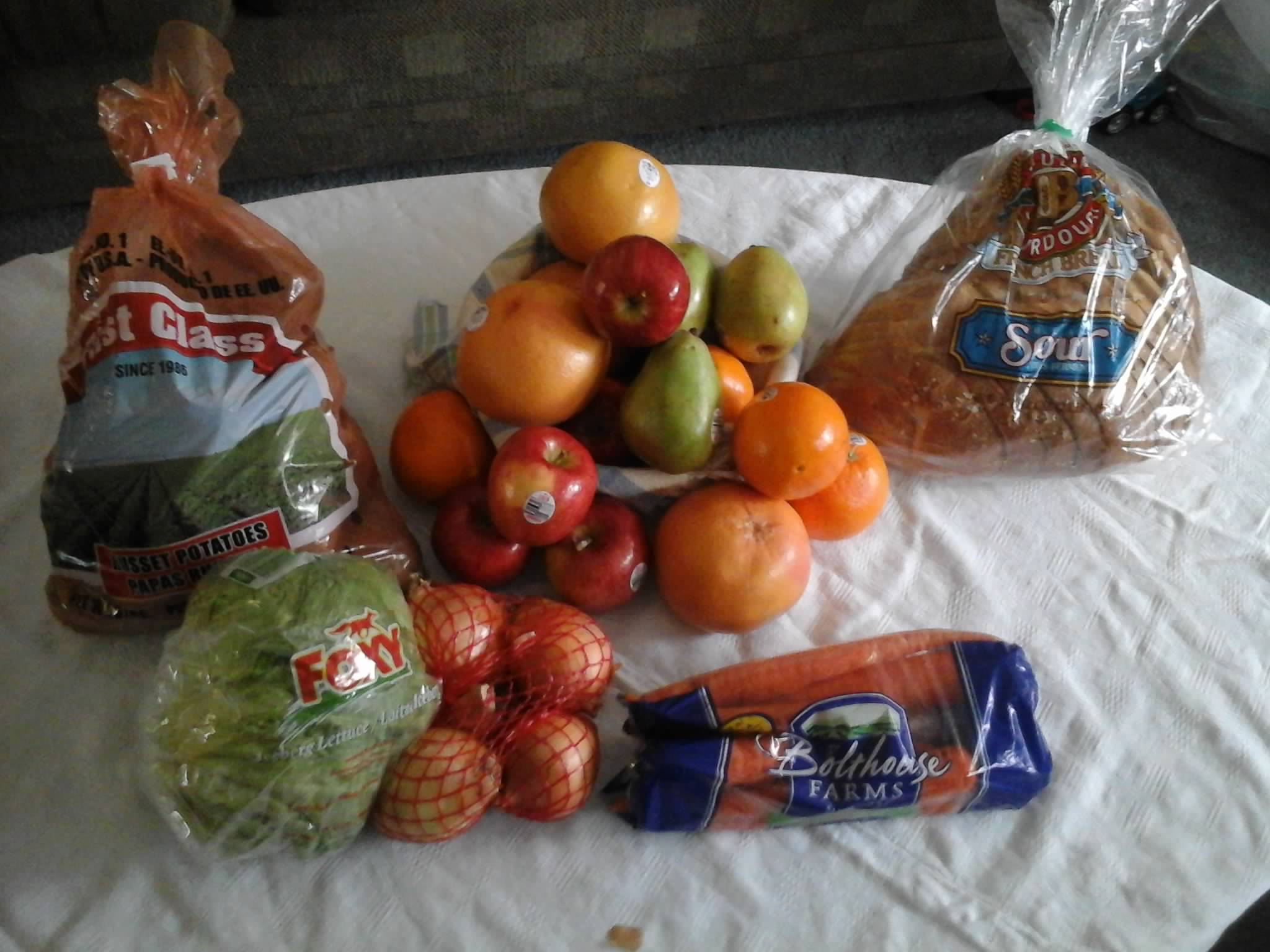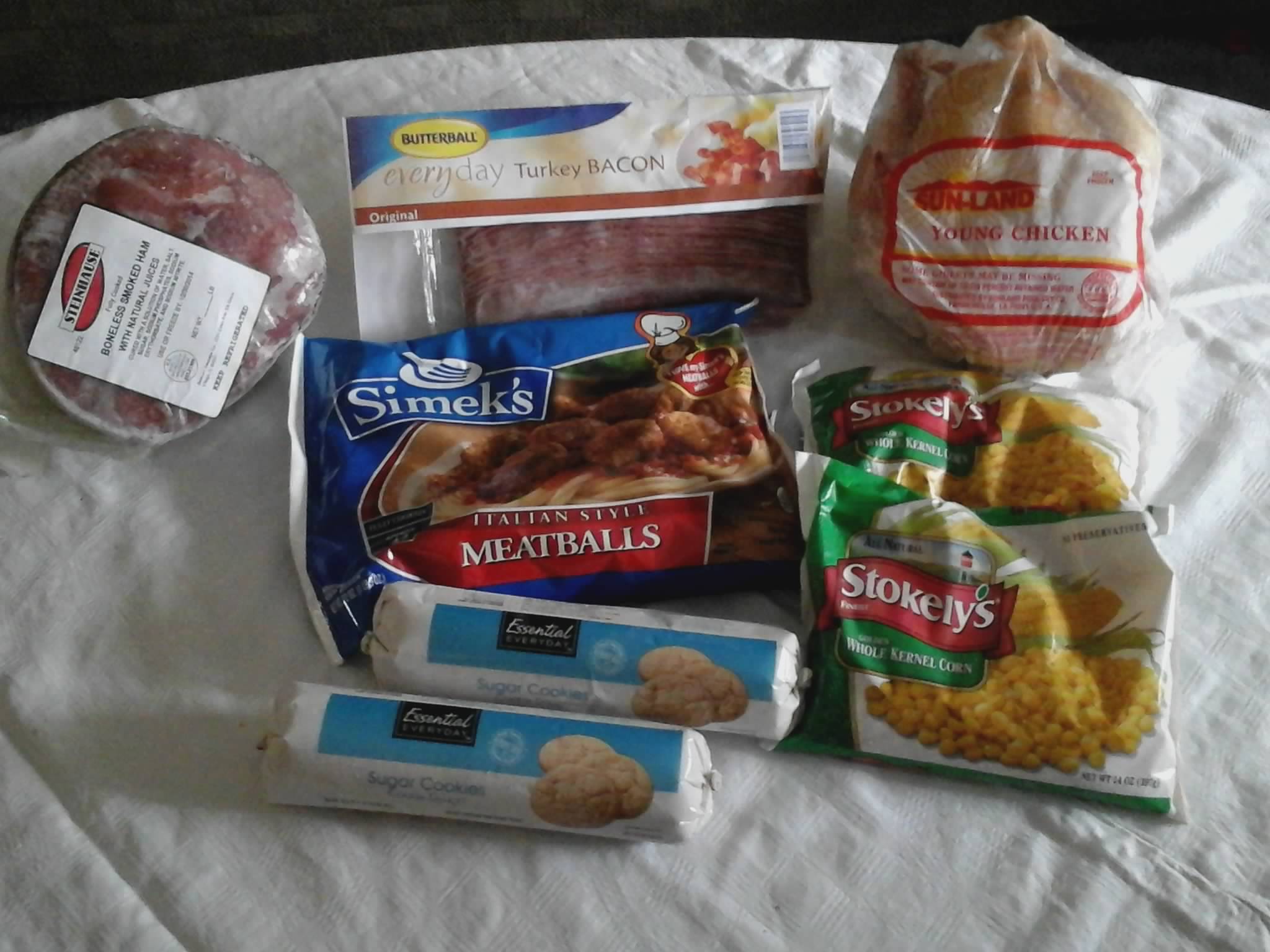Review of Fare For All
For those of you who were following me during the SNAP Challenge, you recall that I ate for a week with less than $31.50 per week in groceries, the average amount received by SNAP (formerly known as Food Stamp) recipients. It wasn’t particularly difficult, but you undoubtedly noticed that I didn’t have much in the way of meat, and I didn’t have any fresh produce. This year, that was even more true, since I relied almost entirely on foods that could be used for emergency food storage. But even the previous year, when I had the run of the supermarket, these items were mostly lacking, simply because they were too expensive. People having to feed themselves on a tight budget often can’t afford these items.
 I recently became aware, however, of a non-profit organization called Fare for All. They are part of The Food Group, formerly known as Emergency Foodshelf Network. But Fare for All is not a foodshelf. They are more like a cooperative that purchases food wholesale and sells it to the public. They rely on volunteers, and they have distribution locations at neighborhood locations such as churches and community centers. Each month, they put together pre-packaged baskets of food which they sell at a fixed price. The exact contents of these baskets vary from month to month. They have two main products. The first is a produce package consisting of fresh fruits and vegetables, which sells for $10. The second is a meat package consisting of about four meat and fish items, which sells for $11. If someone buys both packages together, the total price is discounted to $20.
I recently became aware, however, of a non-profit organization called Fare for All. They are part of The Food Group, formerly known as Emergency Foodshelf Network. But Fare for All is not a foodshelf. They are more like a cooperative that purchases food wholesale and sells it to the public. They rely on volunteers, and they have distribution locations at neighborhood locations such as churches and community centers. Each month, they put together pre-packaged baskets of food which they sell at a fixed price. The exact contents of these baskets vary from month to month. They have two main products. The first is a produce package consisting of fresh fruits and vegetables, which sells for $10. The second is a meat package consisting of about four meat and fish items, which sells for $11. If someone buys both packages together, the total price is discounted to $20.
Here are the two packages that were for sale this month. First, here is the $10 produce package:
I didn’t price this at the supermarket, but it seems like it would cost considerably more than $10. (The large loaf of bread shown to the right is also included for those purchasing both packages together.)
The $11 meat package is shown below. It consists of turkey sausage (about 13 ounces), frozen fish, chicken breasts, and frozen meatballs.
Some months, additional items are available. For example, in November and December, they have holiday packages containing a turkey or ham, as well as other items, for $30. They apparently had some left over, and were selling them this month for $27. In addition to the ham, they included a whole chicken and some other items.
I decided to check them out today, so I visited one of their distribution sites to buy some of their food. Of course, I was already thinking the question that they probably get asked a lot, since it’s on their FAQ’s:
Q: If I purchase food through this program, am I taking away food from someone else who may need it more than I do?
A: Absolutely not. The more people who participate in Fare For All, the more purchasing power the program has. This means that greater savings will be passed onto our customers.
Emboldened by this reassurance, I decided to give them a try. I purchased the items shown above: One produce pack, one meat pack, and one holiday pack. The total was $47.
The process is quite simple. Their website lists their sites and gives the dates and times. Most of the locations are open one day a month for about two hours. Most are during the day, but some are evenings. They have about 30 sites in the Twin Cities and outlying areas. The closest one to me was Real Life Church in Roseville, although there are others that are conveniently located in Minneapolis, St. Paul, and suburbs. That church appears to be affiliated with the Assemblies of God, but the distribution event was not in any way geared toward proselytizing. In fact, the volunteer I spoke with wasn’t affiliated with the church himself. The church appears to serve mostly as a location for the distribution.
The event began at 3:00, and I arrived at about 3:30. There was a short line, but I only had to wait about five minutes. Samples and photos of the various baskets are displayed, and you pick out which package(s) you want. At the end of the line, you pay, and you’re given a ticket which you hand to another volunteer. (They accept cash, credit and debit cards, and EBT cards.) The volunteer then loads up your cart, and another volunteer helps you take it to your car.
You get your food in a sealed box, so I was slightly skeptical that the produce inside might be blemished somehow. But it wasn’t, as you can see from the photos above. They look like the same ones I would have picked out from the display at the supermarket. The only difference seems to be the price.
On the way out, those making a purchase above a certain amount pick out a free loaf of bread.
Overall, this program performs a very real service to the community: It makes high-quality food available to all at a reasonable price. Furthermore, I’ve only been able to find one negative thing said about Fare For All. A 2012 Pioneer Press article contains reports from a few naysayers who believe that this is unfair competition to retailers. They don’t mind poor people buying food from a nonprofit, but they think that people should have to qualify by being poor enough.
I don’t think that criticism is well founded. Fare for All does have a clear price advantage. But retailers can still compete easily, because of wider selection, more convenient hours, and any other advantage they can think of. For-profit corporations are quick to point out that a nonprofit such as Fare For All is tax exempt. However, a for-profit corporation pays income taxes only on its profits. If a cooperative organization voluntarily decides to operate on a non-profit basis, there are no profits to tax. Grocery stores pay property taxes, but since Fare For All is operating from its locations only a few hours a month, any lost property tax revenue is minuscule.
It seems to me that there are some great advantages of having this program open to everyone, regardless of need. First of all, there is absolutely no stigma associated with it. I have no idea whether the other people in line were low income persons who desperately needed the food, or whether they are simply taking advantage of the reasonable price. I assume most were in the latter category.
And more importantly, having the program open to all makes the program more economical for everyone. As the Fare For All website points out, the additional buying power benefits everyone. If nonprofits were required to “stick to helping the needy,” as one critic said they should, this would actually add more costs, as the nonprofit would have to verify need. The end result would be that the truly needy would receive less and pay more.
With its current model, it seems to me that Fare For All is a win-win situation for all.



